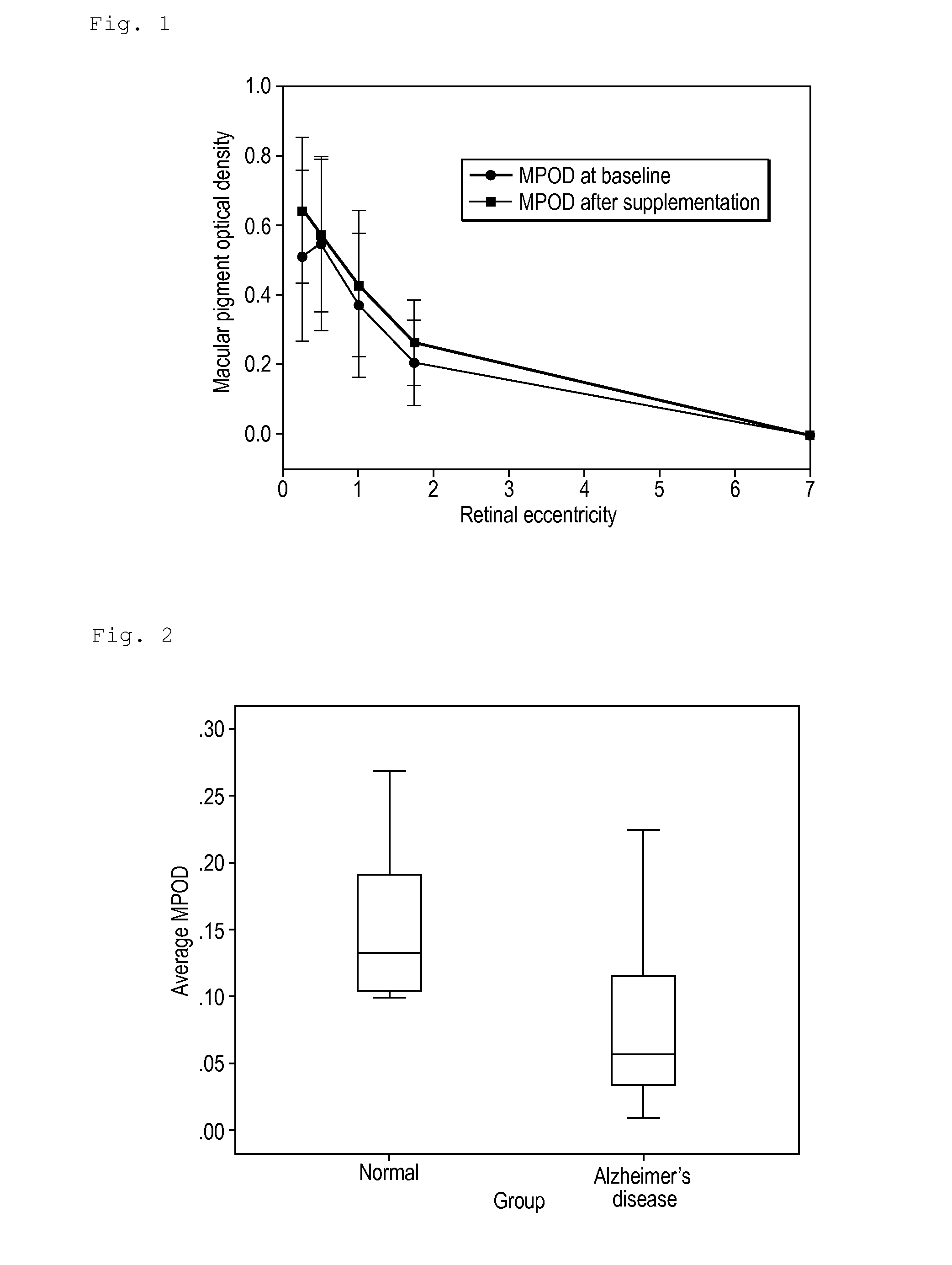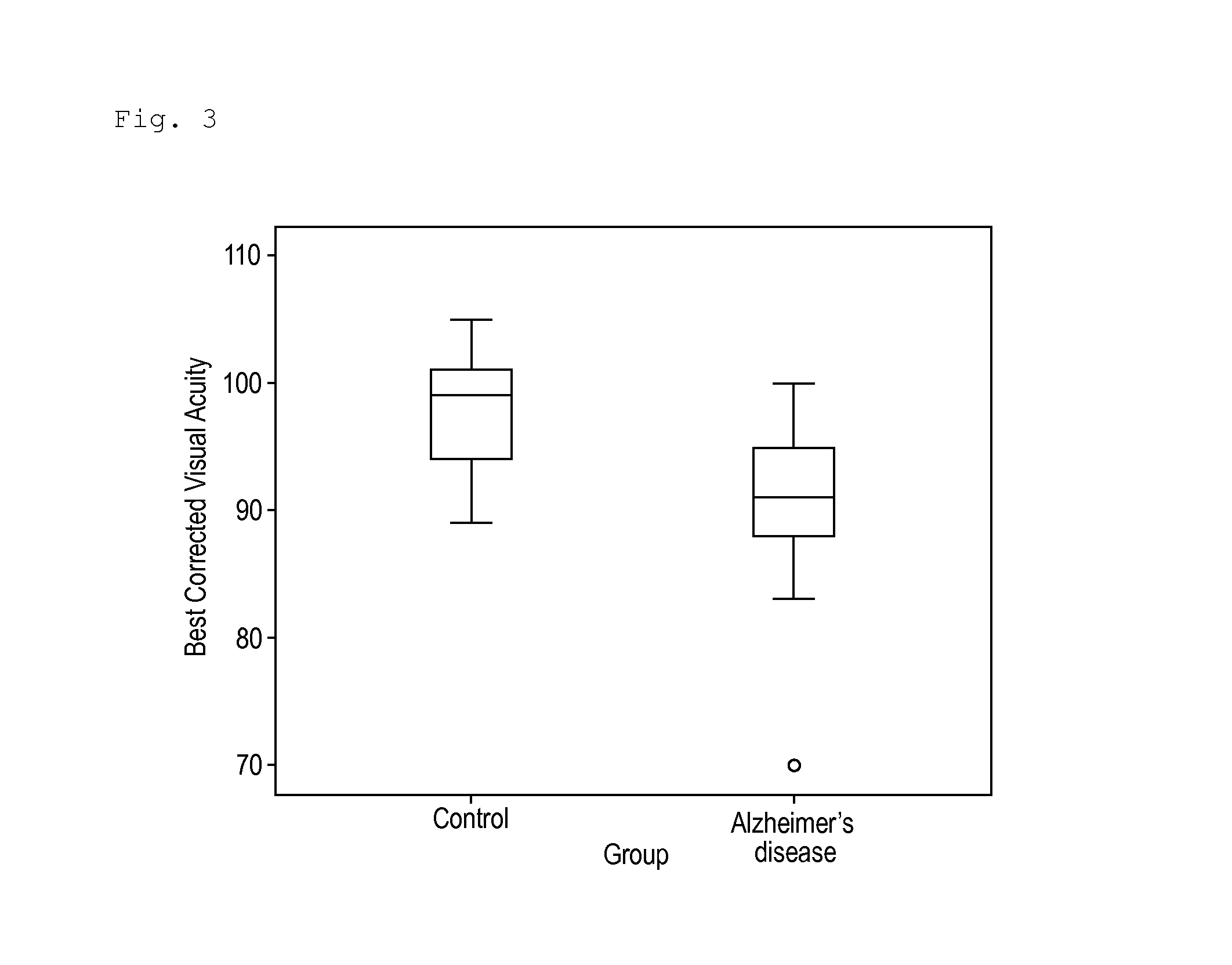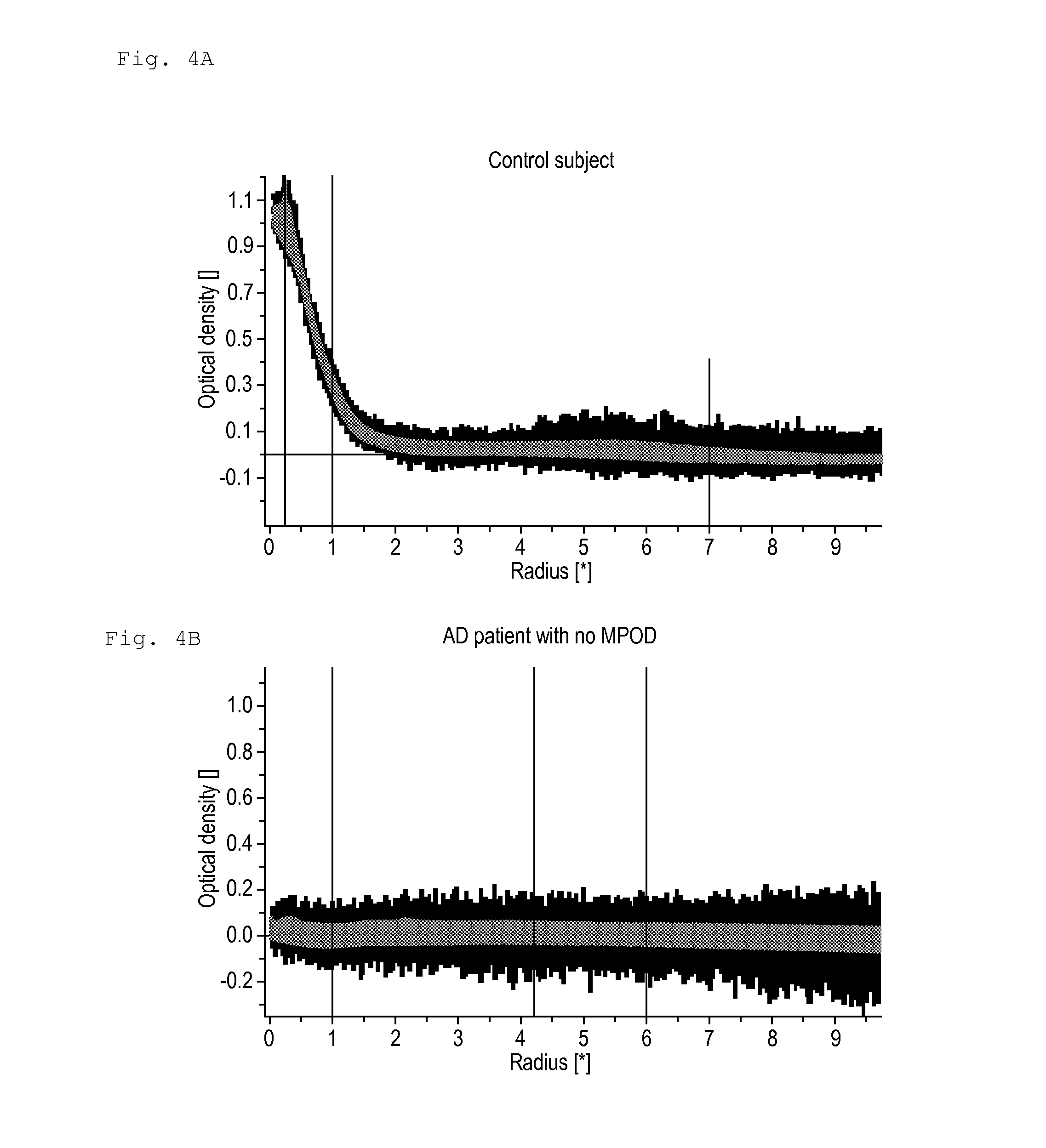Identifying Subjects in Need of Treatment
a technology for identifying subjects and needing treatment, applied in the field of identifying subjects in need of treatment, can solve the problems of low cognitive ability, inability to rely on, and improve visual performan
- Summary
- Abstract
- Description
- Claims
- Application Information
AI Technical Summary
Benefits of technology
Problems solved by technology
Method used
Image
Examples
example 1
Supplementation of a Formulation Containing MZ to Normal People with Atypical Spatial Profiles (“Central Dip”) of their Macular Pigment and the Effect on Visual Performance
[0094]Eight subjects with pre-identified atypical MPOD spatial profile (central dips) (Nolan et al., 2012 Experiemtnal Eye Research, 101, 9-15) were recruited into this study. All eight subjects consumed a daily supplement containing 10 mg MZ, 10 mg L, and 10 mg Z for 3 months.
Methods
[0095]MPOD was measured as described by Nolan et al cited above. Contrast sensitivity was measured as described by Loughman et al (2010 Vision Res. 50, 1249-1256).
Results
[0096]1. MPOD results: As seen from Table 3 and FIG. 1, the spatial profile of MP was normalised following supplementation with 10 mg MZ, 10 mg L, and 10 mg Z for 3 months. All subjects responded to this intervention. Statistically significant increases were seen at all eccentricities except for 0.5°.
TABLE 3EccentricityBaseline3 monthsP0.25°0.51 ± 0.250.64 ± 0.210.5°0...
example 2
Introduction
[0100]The object of this study was to compare MPOD, VP and Cognition of Alzheimer patients (AD) with those of age-matched controls. It was conducted by the Macular Pigment research Group at the Waterford Institute of Technology, Waterford, Republic of Ireland. Ethical permission was obtained.
Methods
Recruitment of Subjects and Obtaining Informed Consent
[0101]AD is predominantly a clinical diagnosis supported by neurophysiological testing. Subjects who meet the inclusion criteria (i.e. patients diagnosed with moderate AD, who have demonstrated capacity to consent) were identified and recruited directly from the local Waterford Regional Hospital. We recruited 14 patients with moderately severe AD and 14 age-matched controls for this study. Total number of subjects=28.
[0102]Lifestyle information: lifestyle factors (e.g. tobacco use) were recorded by questionnaire.
[0103]Health information: blood pressure levels and body mass index were also recorded for each subject.
[0104]Die...
example 3
Introduction
[0130]This study was conducted to investigate the effect of supplementation with the three macular carotenoids (meso-zeaxanthin [MZ], lutein [L] and zeaxanthin [Z]) in patients with Alzheimer's disease (AD) and controls with respect to the following outcome measures: macular pigment optical density (MPOD); vision performance; and cognitive function. It was conducted by the Macular Pigment Research Group at the Waterford Institute of Technology, Waterford, Republic of Ireland. Ethical permission was obtained.
Methods
[0131]Design:
[0132]30 Patients with moderate AD were recruited into the study and in a 50 / 50 double-blind, placebo-controlled fashion and were treated with either a supplement containing 10 mg MZ; 10 mg L; 2 mg Z (the Carotenoids) or a Placebo. An equal number (n=30) of age-matched controls free of AD were also recruited and again in a 50 / 50 double-blind, placebo-controlled fashion supplemented with either the supplement or Placebo. The code was broken at 6 mon...
PUM
| Property | Measurement | Unit |
|---|---|---|
| Concentration | aaaaa | aaaaa |
| Sensitivity | aaaaa | aaaaa |
Abstract
Description
Claims
Application Information
 Login to View More
Login to View More - R&D
- Intellectual Property
- Life Sciences
- Materials
- Tech Scout
- Unparalleled Data Quality
- Higher Quality Content
- 60% Fewer Hallucinations
Browse by: Latest US Patents, China's latest patents, Technical Efficacy Thesaurus, Application Domain, Technology Topic, Popular Technical Reports.
© 2025 PatSnap. All rights reserved.Legal|Privacy policy|Modern Slavery Act Transparency Statement|Sitemap|About US| Contact US: help@patsnap.com



